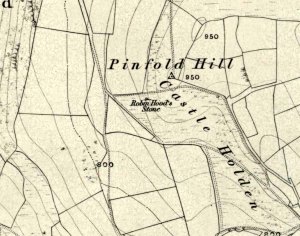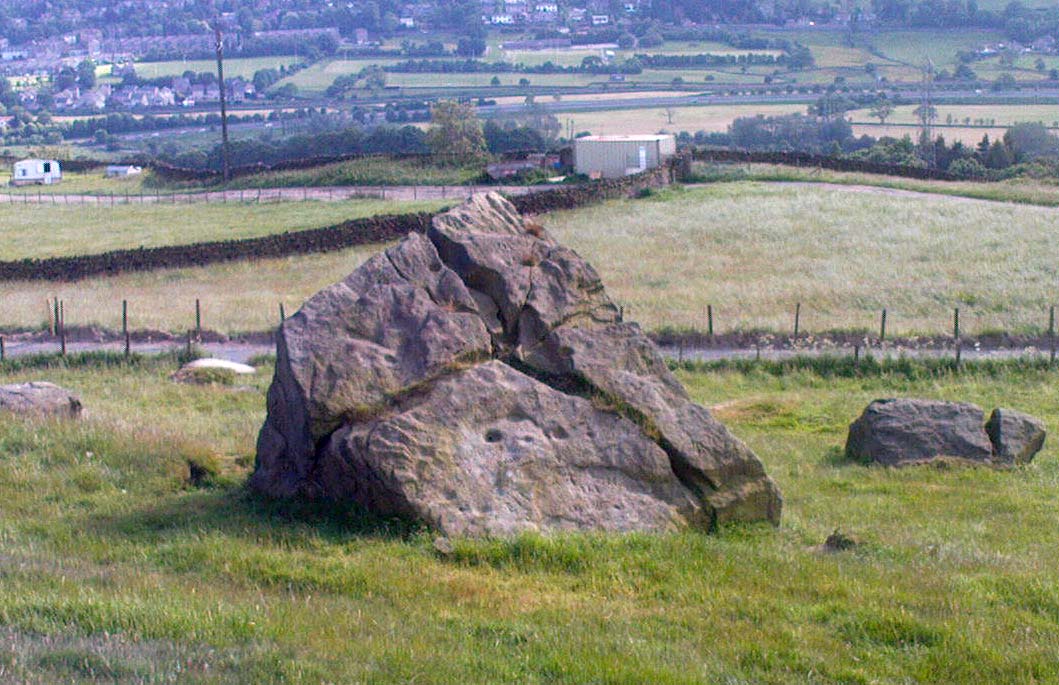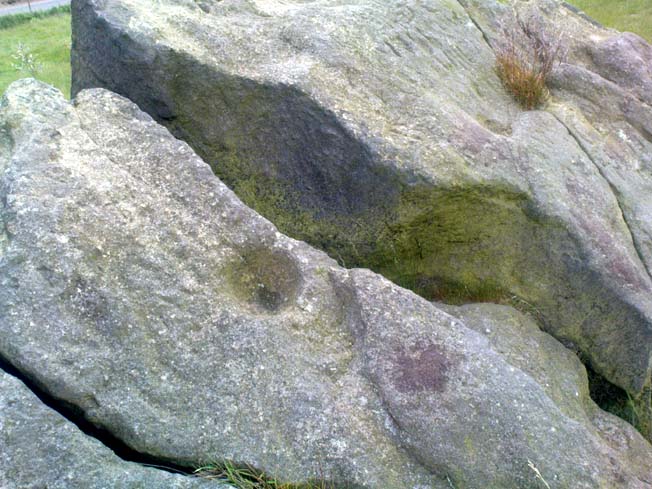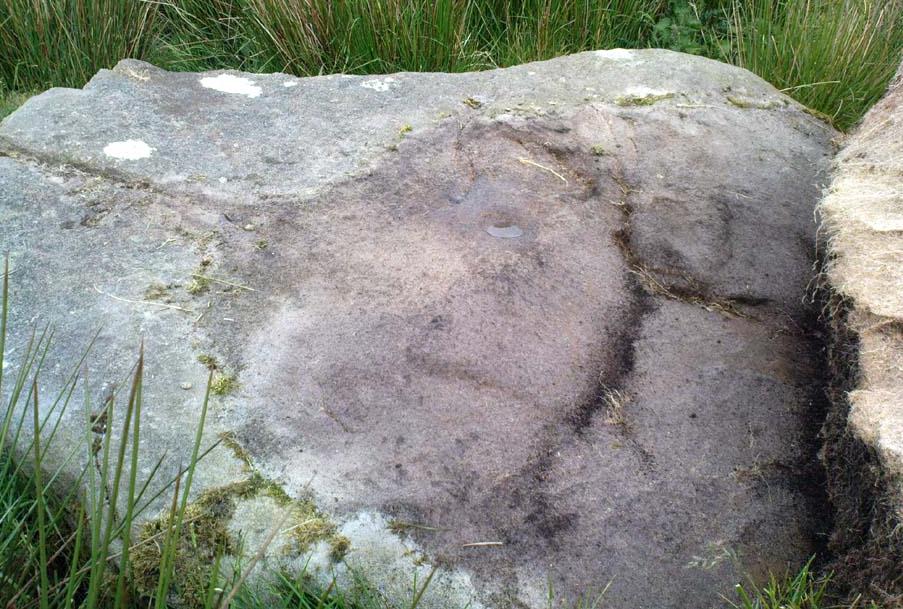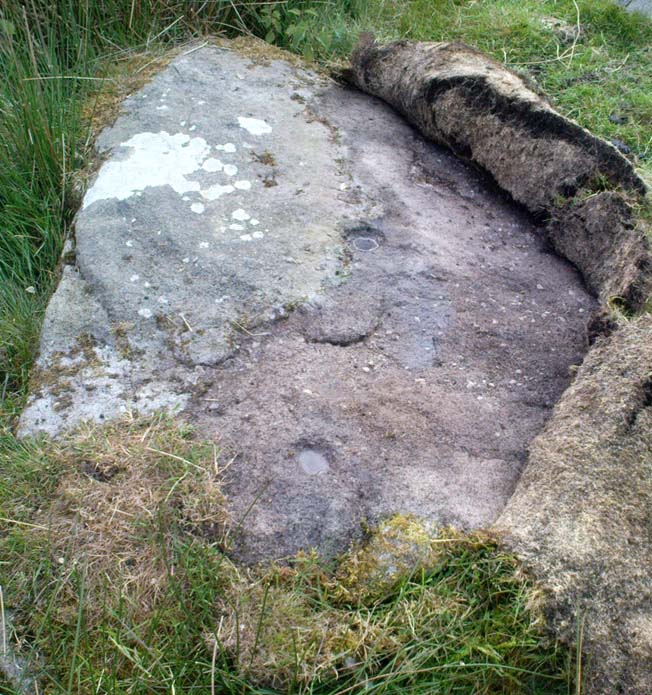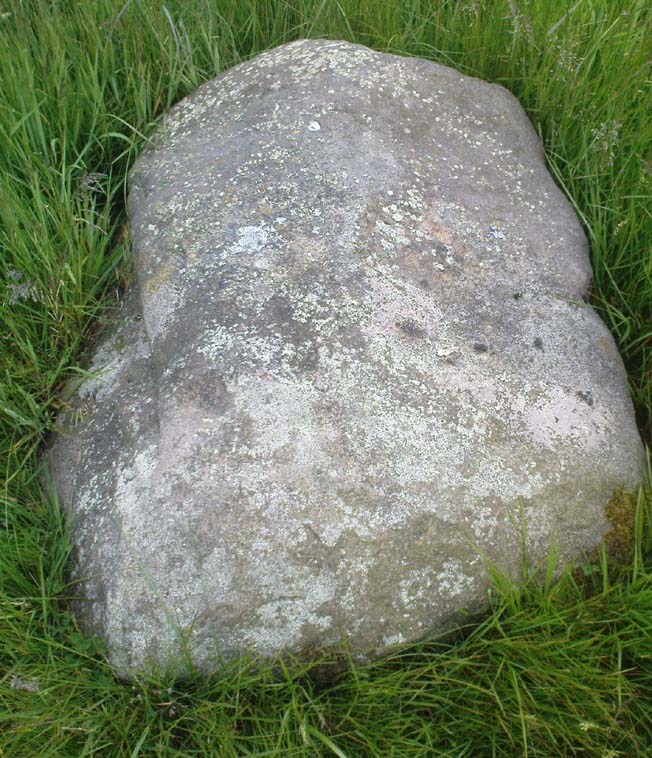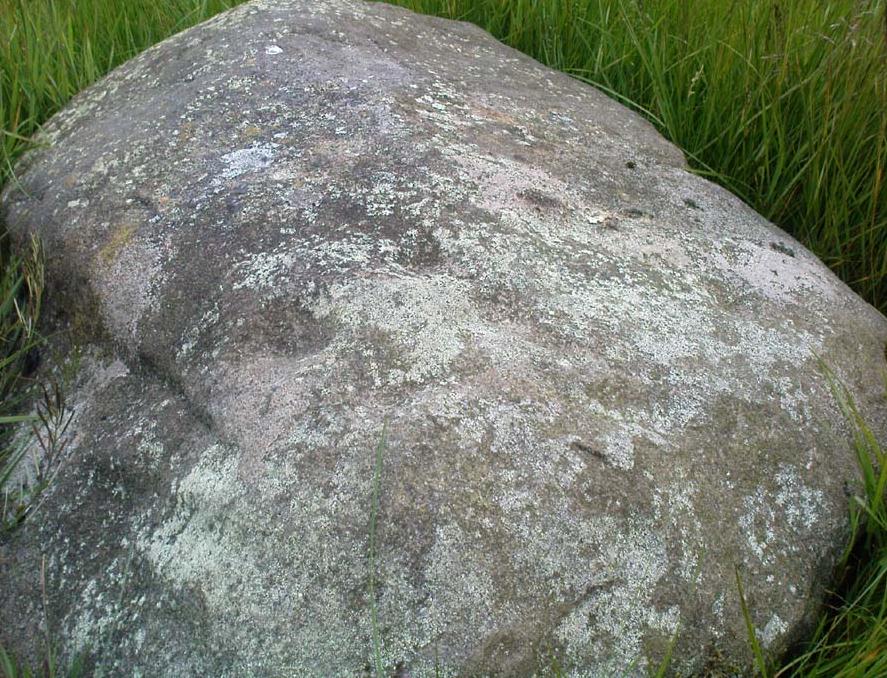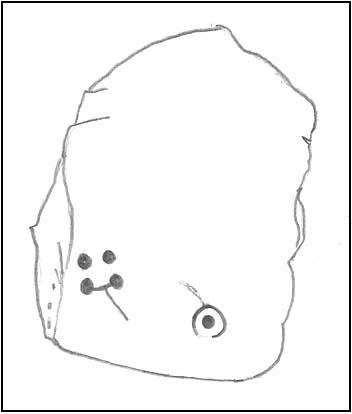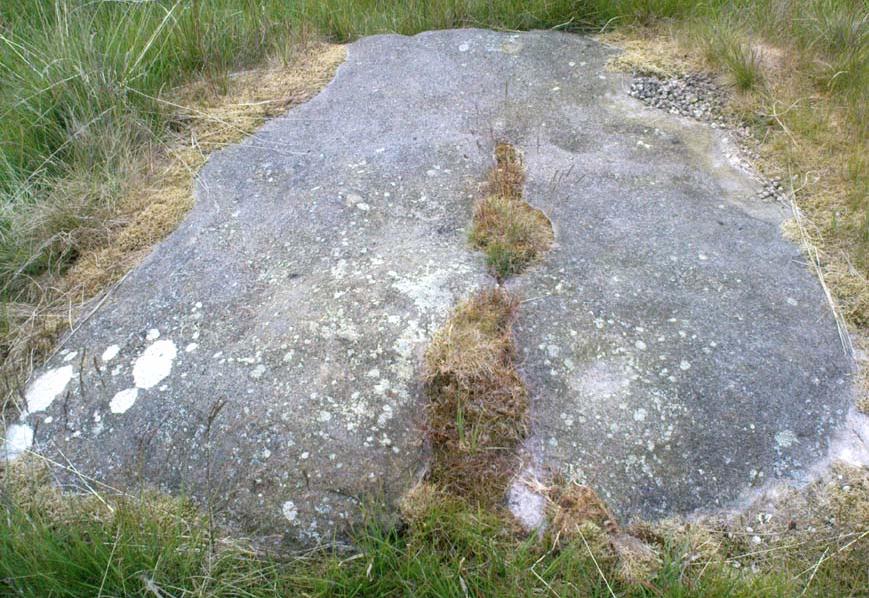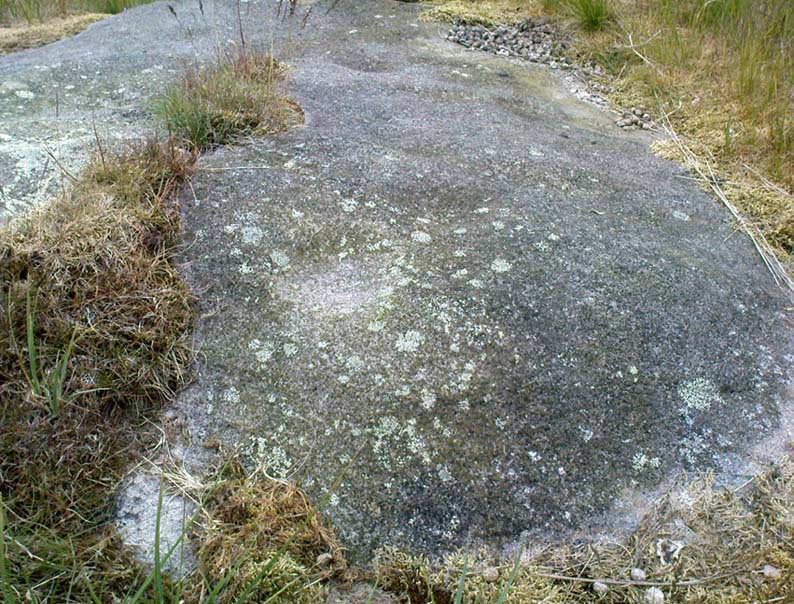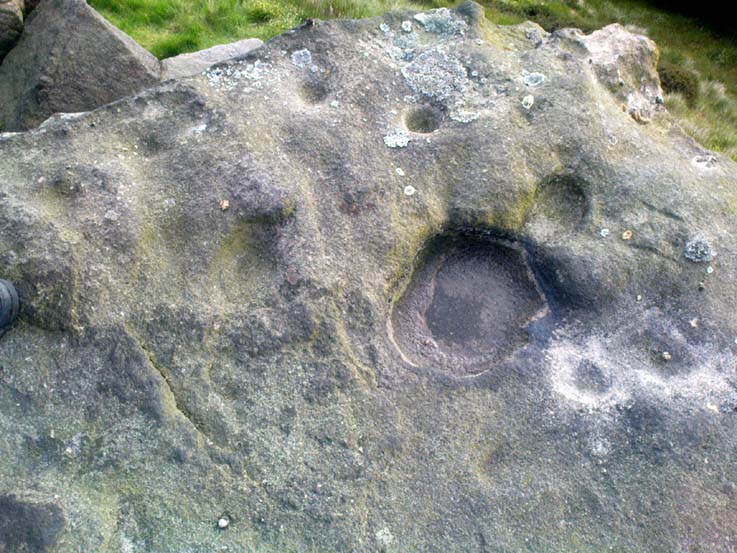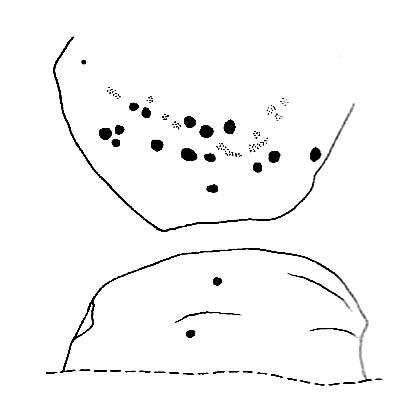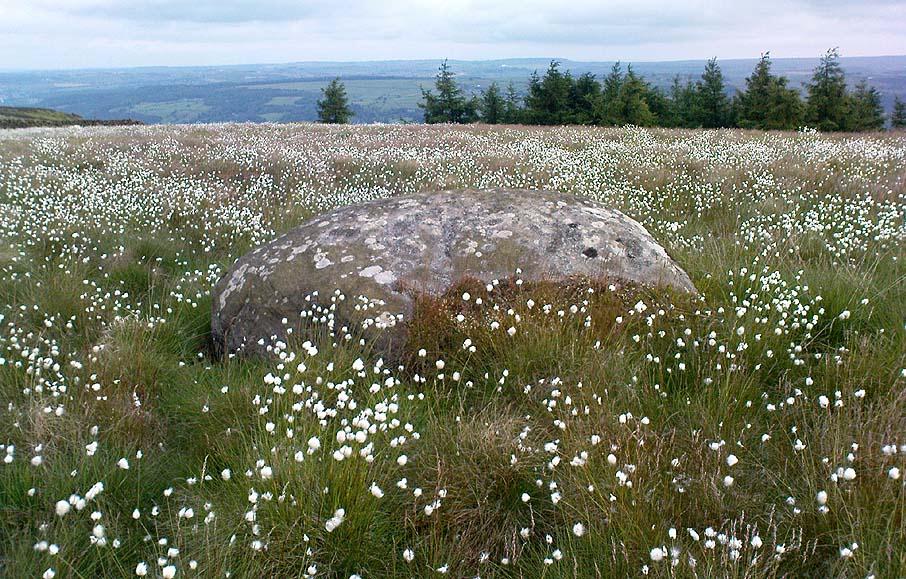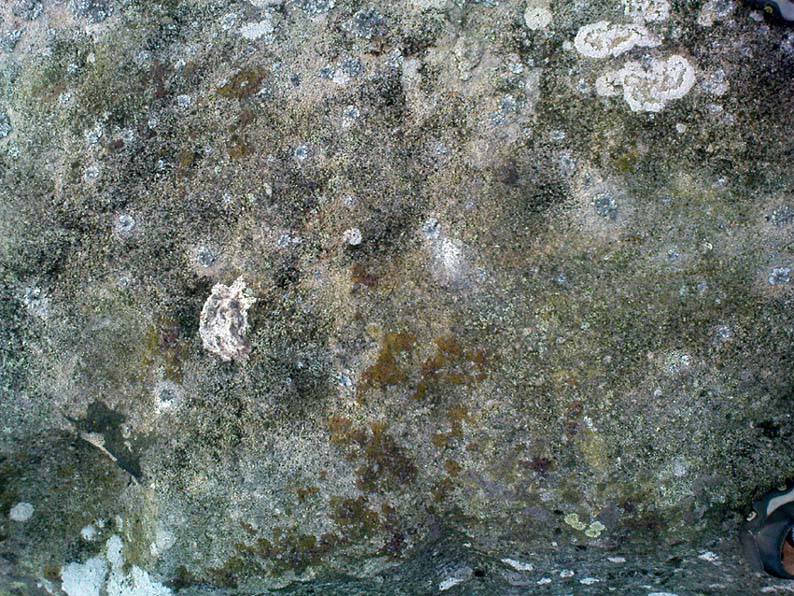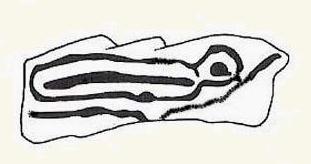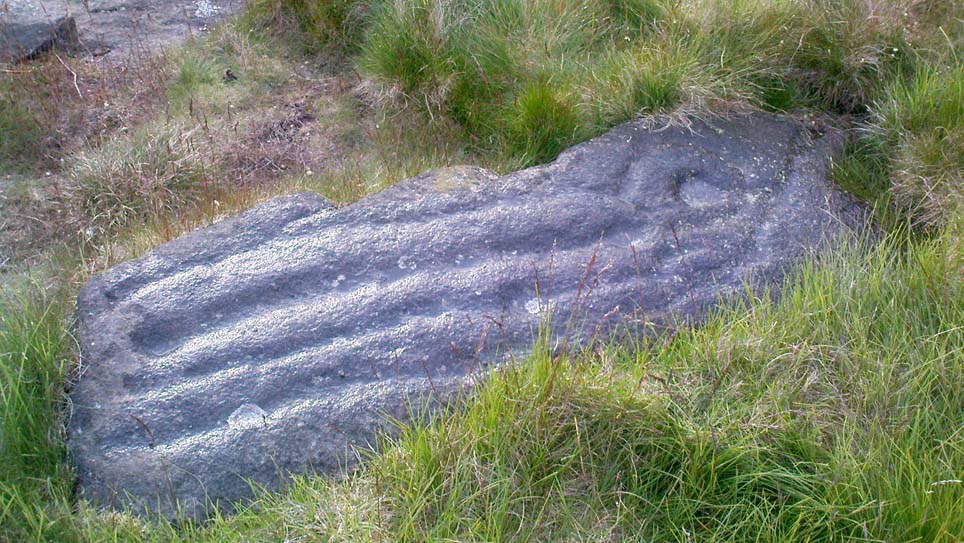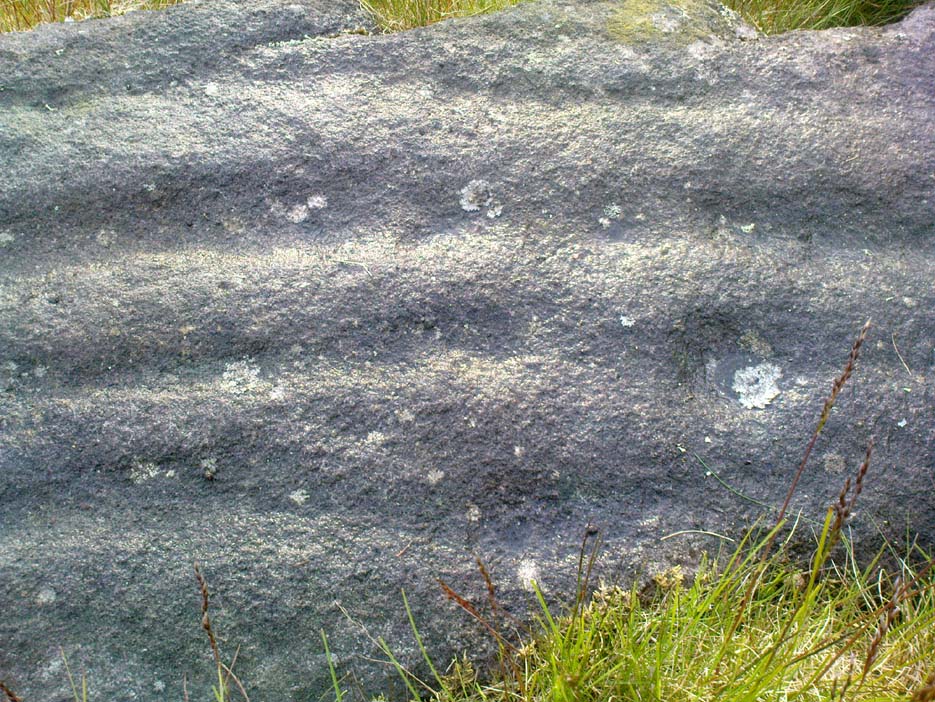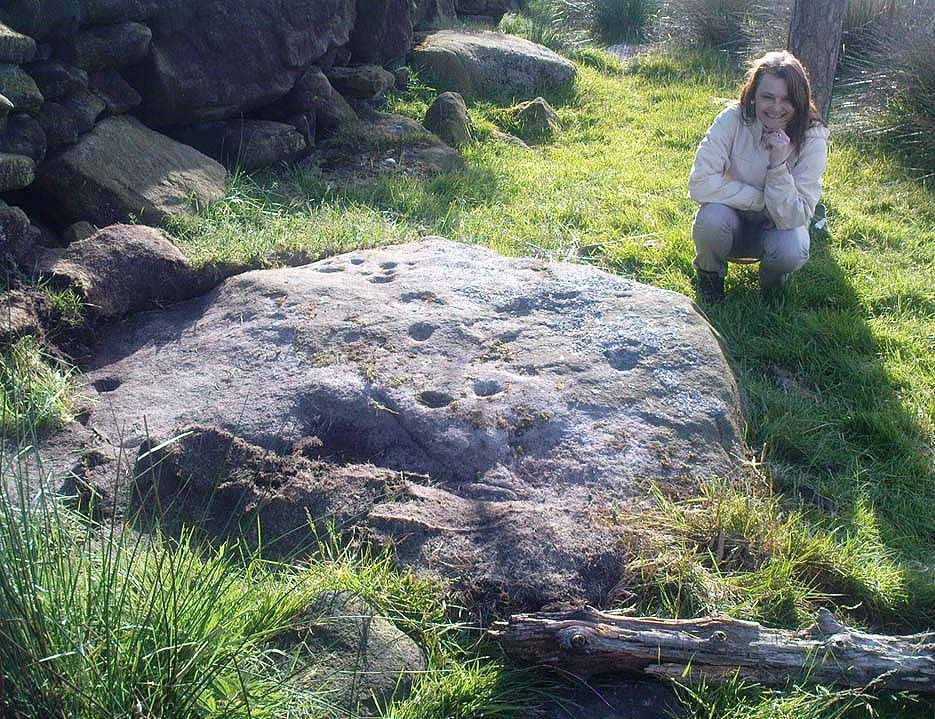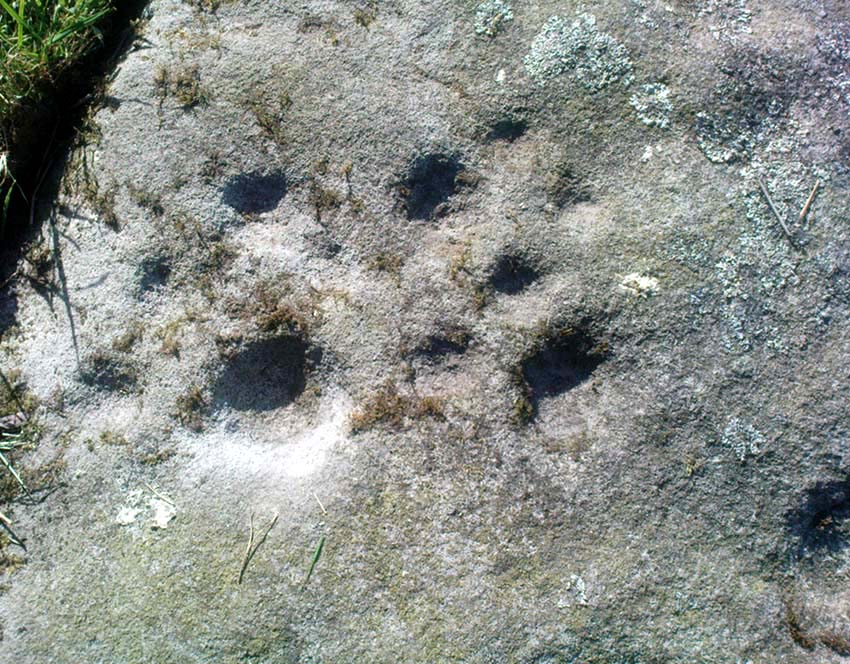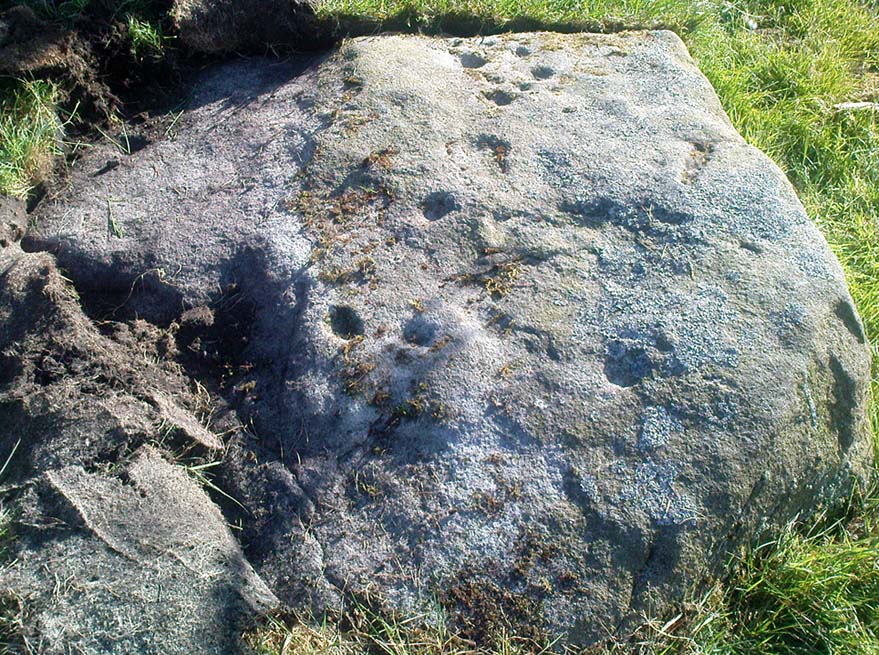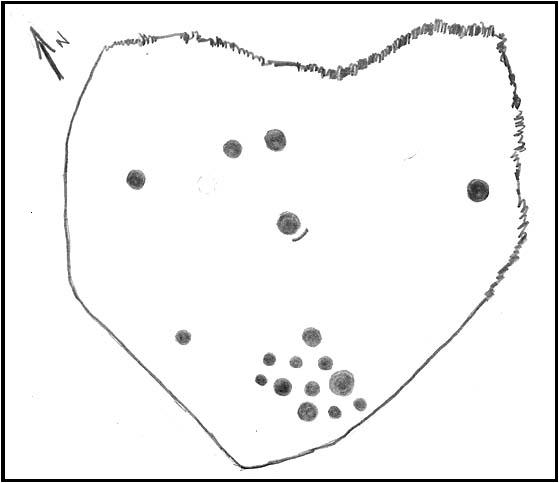Cup-Marked Stone: OS Grid Reference – SE 0705 4490
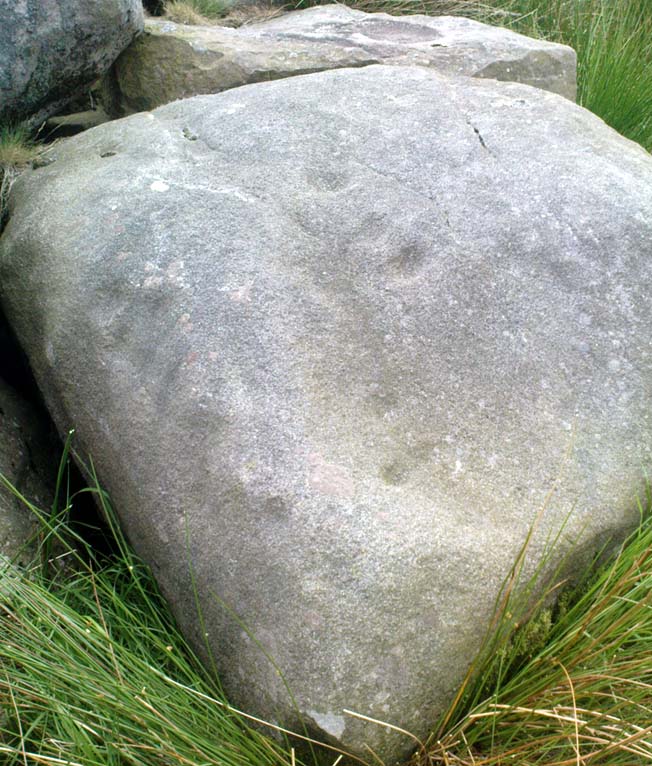
Follow the same directions as to reach Holden’s Buttock Stone, then north over the field and through the gate towards the Rough Holden Carving. As you approach here, keep your eyes peeled for a clump of boulders a little further down the field which stand out. That’s where you wanna be!
Archaeology & History
Found by the old Keighley volunteer, Michala Potts of Bracken Bank, a few weeks back (Friday, June 12, 2009), this previously undiscovered cup-marked boulder is amidst a scatter of boulders piled-up with each other following a field-clearance in recent years. It doesn’t seem to be in its original position, but obviously came from the fields hereby.
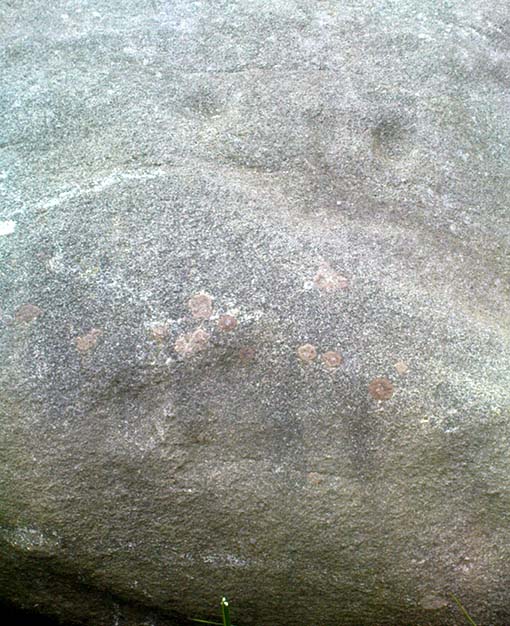
The first view we got indicated 2 or 3 cup-markings on its upper surface; but then as we wandered round it and the adjacent rocks, it seemed that several others appear to have been etched on the vertical face, as shown in one of the photos. The light wasn’t too good by the time we found this (it was one of those days where cloud and sun kept the cup-marks hidden at times!) and then a drizzle came along and stopped a sketch of the stone. But it’s obvious there are 3-4 cup-markings on the upper surface and at least 3 carved on its side. Next time up there we’ll hopefully get better light!
One of the land-owners or tenant farmers hereby has little respect for the prehistoric remains in this area and, in all honesty, I’d expect a number of the petroglyphs to be destroyed in the coming years.
© Paul Bennett, The Northern Antiquarian
